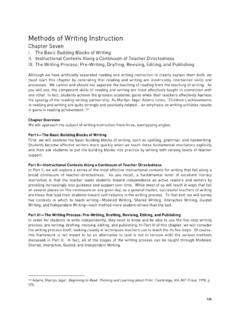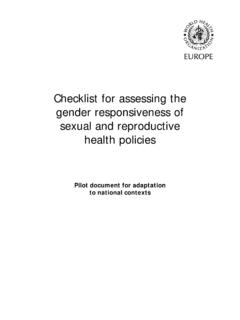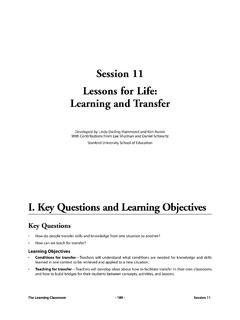Transcription of Guidance for Use of Mobile Devices in Diabetes Control ...
1 Contains Nonbinding Recommendations DTMoSt Guidance Version May 22, 2018 Page 1 of 15 Guidance for Use of Mobile Devices in Diabetes Control Contexts The draft of this document was issued on May 22, 2018 Document Number: DTMOST-MAY 22 - 2018 Contains Nonbinding Recommendations DTMoSt Guidance Version May 22, 2018 Page 2 of 15 Preface Public Comment You may submit electronic comments, questions, and suggestions relating to this Guidance document at any time to the chairs of the DTMoSt ( Diabetes Technology Society Mobile Platform Controlling a Diabetes Device Security and Safety Standard) committee: David Klonoff (Chair): David Kerr (Chair): David Kleidermacher (Technical Chair): Identify all comments with the document number listed in the title page.
2 Additional Copies Additional copies of this document are available from the Internet. You may also send an e-mail request to the contacts listed above to receive a copy of this Guidance . Acknowledgements The DTMoSt Chairs, David Klonoff (Mills-Peninsula Medical Center), David Kerr (Sansum Diabetes Research Institute), and Dave Kleidermacher (Google), and Assistant Chair, Barry Ginsberg ( Diabetes Technology Consultants), would like to thank the members of the steering committee and their organizations for their contributions towards the creation of this Guidance , including: Aiman Abdel-Malek (Insulet), David Armstrong (University of Southern California), Guillermo Arreaza-Rubin (NIDDK / NIH), Joshua Balsam (FDA), Stayce Beck (FDA), Don Boyer (BOYER@RegulatorySolns), Carole Carey (IEEE), Joe Chapman (MITRE), Penny Chase (MITRE), Elvis Chan (FBI), Kong Chen (NIDDK / NIH), Sammy Choi (US Army), Mark Coderre (OpenSky), Barry Conrad (Stanford), Keesha Crosby (Tri-Guard Risk Solutions), Eyal Dassau (Harvard), Sheldon Durrant (MITRE), Anura Fernando (UL), Joseph Fernando (ARM), Justin Fisher (Booz Allen Hamilton), Brian Fitzgerald (FDA), Mike Golden (Samsung), Christian Howell (DHS), Christopher Keegan (Beecher Carlson), Lisa Kerr (Australian Government Department of Health)
3 , Mandeep Khera (Consultant), Michael Kirwan (IEEE & Continua), Boris Kovatchev (UVA), Jeffrey LaBelle (ASU), Benjamin Lee (Flex), Luis Malave (EOFlow), Bryan Mazlish (Bigfoot Biomedical), Laurel Messer (University of Colorado), Uwe Meyer (T V Rheinland), Thomas Miller (Novo Nordisk), John Oberlin (US Air Force), Irina Nayberg (Mills-Peninsula Medical Center), Dale Nordenberg (MDISS), Yarmela Pavlovic (Hogan Lovells), Matt Petersen Contains Nonbinding Recommendations DTMoSt Guidance Version May 22, 2018 Page 3 of 15 (ADA), Patrick Phelan (UCSF), Gil Porat (Abbott Diabetes Care), Azhar Rafiq (NASA), Kelly Rawlings (Vida Health), Jeffery Reynolds (Ascensia Diabetes Care), Ribeiro (Insulet), Linda Ricci (FDA), Naomi Schwartz (FDA), Jennifer Sherr (Yale), Christine Sublett (Sublett Consulting), Michael Taborn (Intel), Eugene Vasserman (Kansas State University), Alicia Warnock (US Navy), Tim West (Atredis Partners), Eric Winterton (Booz Allen Hamilton), Michael Wiseman (Australian Government Department of Health), Jonathan Woo (EOFlow), Margie Zuk (MITRE).
4 Abbreviations American Diabetes Association (ADA) Application Programming Interface (API) Central Processing Unit (CPU) Consumer Mobile Device (CMD) Department of Homeland Security (DHS) Diabetes Technology Society Cybersecurity Standard for Connected Diabetes Devices (DTSec) Diabetes Technology Society Mobile Platform Controlling a Diabetes Device Security and Safety Standard (DTMoSt) Federal Bureau of Investigation (FBI) Food and Drug Administration (FDA) IEEE (Institute of Electrical and Electronics Engineers) International Electrotechnical Commission (IEC) International Organization for Standardization (ISO) Mobile Device Fundamentals Protection Profile (MDFPP) National Aeronautics and Space Administration (NASA) National Information Assurance Partnership (NIAP) National Institute of Diabetes and Digestive and Kidney Diseases (NIDDK) National Institutes of Health (NIH) Personal Area Network (PAN) Protection Profile for Connected Diabetes Devices (CDD PP) Real-time operating systems (RTOS) Contains Nonbinding Recommendations DTMoSt Guidance Version May 22, 2018 Page 4 of 15 Preface 2 Public Comment 2 Additional Copies 2 Acknowledgements 2 Abbreviations 3 1.
5 Introduction 5 2. Scope 6 Remote Control Use Case 6 Closed Loop Control Use Case 6 Non-Goals 6 3. Definitions 7 4. Meeting STs derived from the CDD PP 8 Guidance for CDD PP - EP Enhanced-Basic 8 Guidance for CDD PP - EP Moderate 9 5. Real-Time 10 CMD Real-Time Performance Considerations 10 Guidance for Remote Control 11 Guidance for Closed Loop Control 11 6. Availability of the PAN 13 Use Cases for CMDs in PANs 13 Contains Nonbinding Recommendations DTMoSt Guidance Version May 22, 2018 Page 5 of 15 1. Introduction The need to assure medical device functionality and safety has become more challenging with the growing use of wireless and Internet-connected Devices . For example, can safe operation of the device be impacted by loss of wireless connectivity due to interference or malicious jamming?
6 Indeed, an important component of safety assurance is security assurance: ensuring that malicious attacks against these Devices ( via their network connections) do not adversely impact functionality and safety. In addition, there is significant increased use of off-the-shelf consumer Mobile Devices (CMDs), ( iPhones and Android smartphones) in medical contexts. While these contexts have historically been limited to monitoring rather than Control of the medical device and its safety functions, there is increasing patient demand for the use of such Mobile Devices for Control applications. For example, the use of a smartphone app can replace a custom insulin pump remote controller, reducing time-to-market and cost of new treatments while providing for an improved user experience and quality of life for people with Diabetes .
7 In order to realize the potential beneficial uses of consumer digital technology, the medical community, including device manufacturers, regulators, caregivers, and patients must be aware of the risks associated with the use of CMDs and apps in these contexts and follow appropriate regulatory, developmental, lifecycle management, and usage guidelines to ensure that proper functionality and safety are maintained. This Guidance has been developed by a multi-stakeholder community consisting of the FDA, independent cybersecurity experts, consumer technology developers ( smartphone developers, smartphone operating system developers, and smartphone chipset developers), Diabetes device developers, medical research funding agencies, physicians, educators, consumers, regulatory experts, liability attorneys, policy experts, and more.
8 This Guidance has been developed to identify issues and best practices relating to CMD use in medical contacts. The same stakeholder groups and other applicable interested parties should consider this Guidance in the design, development, evaluation, approval, management, deployment, and use of CMDs in medical Control contexts. The recommendations contained in this Guidance are intended to supplement existing standards and Guidance , including FDA recognized standards such as ISO/IEC 62304 and FDA Guidance such as the Content of Premarket Submissions for Management of Cybersecurity in Medical Devices . These guidelines describe current consensus thinking of the DTMoSt committee membership on this topic and should be viewed only as recommendations, unless specific regulatory or statutory requirements are cited.
9 The use of the word should means that something is suggested or recommended, but not required. Contains Nonbinding Recommendations DTMoSt Guidance Version May 22, 2018 Page 6 of 15 2. Scope The intent of this document is to provide Guidance for the safe use of CMDs in the Control of Diabetes -related medical Devices . While this Guidance may be applied for other medical use cases, it has been developed specifically for Diabetes related Control by a stakeholder community focused on Diabetes Control use cases. The following two use cases are covered by this Guidance : - Open loop remote Control - artificial pancreas/closed loop Control In general, the Guidance herein applies to both use cases unless explicitly clarified.
10 Open Loop Use Case In this use case, one or more Mobile applications (apps) running on a CMD are used to perform some command operation, upon request by the CMD user, on a wirelessly connected Diabetes device. For example, a Diabetes Control application may provide a user interface that enables the user to specify the amount of insulin to be dosed by a wirelessly connected insulin pump. The CMD and its Diabetes -related apps replace the traditional remote Control medical device manufactured by a medical device supplier. Closed Loop Control Use Case In this use case, the CMD is used to host software that performs some portion of a closed loop Control system. For example, a continuous glucose monitoring system transmits (via wireless network) sensor readings to a CMD application; the CMD application executes an algorithm to compute treatments of insulin; the CMD autonomously transmits (via wireless network) treatment commands to an insulin pump.





